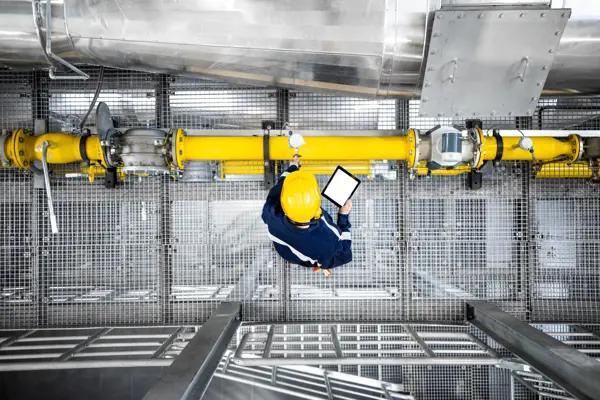Dynamics Matters Podcast: Ep 38 - The benefits of a blended workforce
With special guest Dan Snowdon, HSO Solution Director
✔ Why having a blended workforce in field service is a significant benefit
✔ The benefits of the gig economy
✔ And the overall flexibility, efficiency and improved customer service that technology can bring
Podcast summary
The benefits of a blended workforce
We discuss the significant benefits that a blended workforce can bring to a field service operation in terms of the employer, the workers themselves and, most importantly, the end customer.

Transcript
Intro
Welcome everyone to the HSO Dynamics matters podcast.
Your regular sonic dive into the world of Microsoft technology related matters and much more besides.
I’m your host Michael Lonnon, and today I’m joined by HSO Solution Director and Durham lad, Dan Snowdon.
In today’s podcast we discussed why being a jack of all trades isn’t such a bad thing. And how having a blended work force is actually a significant benefit to the employer, the workers themselves and, most importantly, the end customer who you are supporting.
So, grab a brew, sit back, relax, and enjoy the show.
Michael Lonnon
Rock climbing or abseiling?
Dan Snowdon
Absolutely neither, I can’t think of anything less that I would want to do really, other than maybe fly.
Michael Lonnon
Not a fan of heights then?
Dan Snowdon
It’s not necessarily just the height is probably the falling.
Michael Lonnon
Beatles or the stones?
Dan Snowdon
That’s a tough one, really because I like music generally. I would probably have to say the Beatles if I was going to pick one.
Michael Lonnon
I think most people would say that. I would go with the stones as I recognise more hits. Jack of all trades or master of one?
Dan Snowdon
Well in the role I’m in I would probably go down the route of jack of all trades. There’s an ability of being able to understand the platform in its whole entirety. Obviously, in a role that like me a jack of all trades helps. Sometimes you can undermine your value by not having a mastery in one of them.
Michael Lonnon
Indeed, and that’s what we’re discussing here, the idea behind or the value behind having a blended workforce particularly in field service. So, the first question for me is why is having a blended workforce with multiple people with multiple skills of value and benefit to a field service organisation?
Dan Snowdon
Well, firstly it’s important to point out that it’s not just about the benefit to the field service organisations anymore, it’s about the benefits to the people who are going to be a resource as well. It’s a mutually beneficial approach to introduce a blended workforce, not just because of the flexibility that people want nowadays, with other commitments with regards to families and mental health, that are becoming more in the public eye, but in terms of an organisation’s perspective, it means that they can offer the customer a cheaper, more efficient, quicker response to the service as well.
Michael Lonnon
Has the pandemic heightened the necessity to have a more blended workforce, because people are back home or they’re isolating so you’re having to rely on different people for different roles that require different skills.

How to make your new Microsoft project a guaranteed success
In 10 minutes, this brochure shows you how to launch projects in the quickest possible time, resolve mistakes and mishaps, and keep your ongoing costs to the barest minimum.
Dan Snowdon
It’s important to understand that it was going to happen anyway but what the pandemic has done is accelerated the process substantially. So similar to the way that everybody had to transition to working from home and technologies, such as Microsoft Teams, accelerated through organisations, the adoption of a blended workforce, although it might have been a longer-term goal, has had to accelerate in the same way.
Michael Lonnon
What’s the value for individuals? I would have always said before these types of conversations, having a mastery in one particular skill will lend itself better to you in the longer term. So as an individual, then why is it great to have a blended set of skills that you can apply to different things?
Dan Snowdon
When we’re talking about blended workforce, it’s not just about the skill set the person has, it’s about the type of resource that person is as well. It’s about mixing the directly employed labour force with the people who spin up and spin out of being available to an organisation at different times, along the lines of the gig economy. One of the major benefits to people in the gig economy is that they then take control and are able to choose the work they do and the times they work. And that can make them feel more empowered because the work they’re doing is enjoyable. It’s in their comfort zone and within their skill set.
Michael Lonnon
So, for choice and flexibility they are masters of their own destiny. From a customer’s perspective how does being served by a blended workforce help them?
Dan Snowdon
It increases the efficiency of the service because it can mean the organisation who is providing the resource is able to give you options in terms of the person who is closest versus the person who has the more expensive or the cheapest resource. It’s that efficiency versus flexibility that provides benefits all around.
Michael Lonnon
How do you create one? Sounds like a weird question but how do you create a blended workforce? Are there certain attributes you should be looking for in individuals?
Dan Snowdon
The traditional employment methods don’t change in terms of your direct labour force. So, if you’re going to go down a true blended workforce approach, and you’re going to have your direct workers, then you’re still going to be doing all of the same HR activities you would do. Even to be checking out the skill sets, you’re going to be coming to an agreement on terms of contracts, and you’re then going to have that person employed through probation periods, and then for the foreseeable future. Doing all of the things like appraisals that you would expect to do. With the other half of that blended workforce, and gig economy type workers, it’s a much more transactional and fluid approach, you will have regular intervals where you will review their performance, you could even do it at the end of every job they undertake, you could incorporate feedback capabilities within the software you develop, to make sure the customer always has that ability to provide you with data about how that person is performing. It’s a much more transactional and fluid approach.
Michael Lonnon
The individuals in this gig economy, they have more skills and potentially more ways they can serve your customers. I think you alluded to this earlier, are we moving towards this blended workforce?
Dan Snowdon
Yes, I do. If you think about service online, the apps you can download on your phone that cover a lot of the things you look for every day, in terms of getting work done in your house, or travelling from one place to another, or getting food delivered, a lot of it is based on people who just tell the app they’ve come online. They’ll then pick up the jobs they get prompted to pick up, on a first come first serve basis, they can then carry out the work. And there’s then that whole feedback process on how that person did and it’s an ongoing loop. I do see in certain industries it becoming the norm, but it doesn’t take away from the fact there’s always going to be industries or organisations that need to have an option of both.
Michael Lonnon
If there was one big benefit, one main value for you as an organisation looking to build a blended workforce to support your customers what’s the big win?
Dan Snowdon
The level of skill of the people who are doing the job. The opportunity to pick someone that might have 20 years’ experience within your organisation and you can pick that person but you can also then pick the person who maybe you’ve brought in for a three month period and they’re going to be online and offline and they’ve got an incredibly high skill set they want to just make available to you for a certain period of time. That option and that flexibility is going to benefit both parties.
Summary
Finding workers with twenty years of experience with precisely the skill set you need would ordinarily be a tall order, but a blended workforce makes this simpler.
The gig economy allows you to supplement an internal workforce with third-party workers to skill up quickly to serve the needs of your customers.
A blended workforce allows you to scale up and down as demand dictates, meaning project cost is easier to manage, and profit margins less at risk.
The pandemic has highlighted the need for flexibility and a blended workforce may be just what you need.
On that note, thanks for listening, take care of yourselves.
